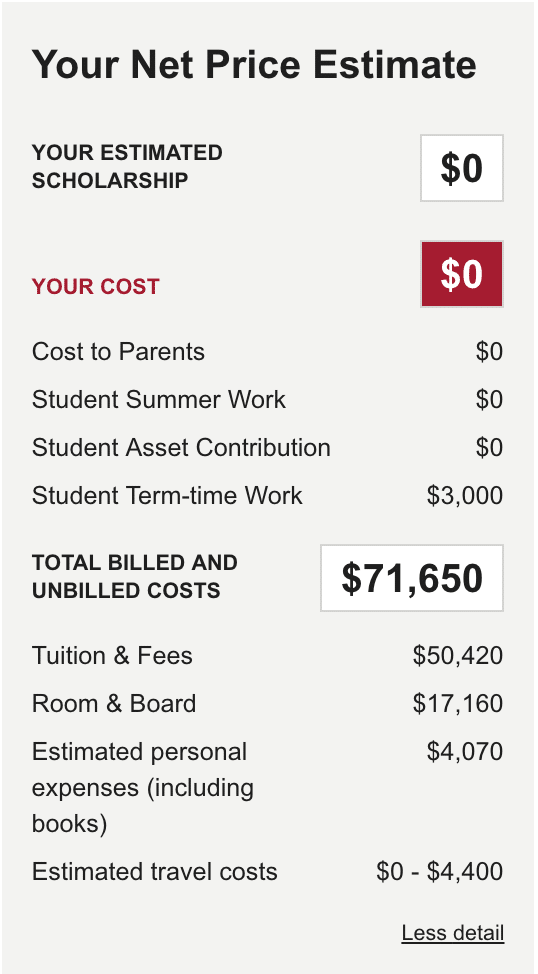It’s no secret that college is expensive, but how does the price compare when looking at public versus private colleges? College cost breakdowns can be tricky because private colleges tend to be more expensive, but their elite status makes the price worth it for thousands of students. There are also plenty of elite public schools, with highly selective admissions standards. So, how do you determine the cost-benefits of a college with an especially hefty tuition?
Joyce Draper, Independent Educational Consultant and founder of Draper College Consulting, said that when it comes to the college process, it’s most important to find a college that fits the student’s social, financial, and academic needs. She recommends that the family have a conversation about the finances early.
“I think it’s important to have a conversation before you even begin the college process. It’s a very important part of the college process to have that conversation and for the families to figure out their finances. Do they have a budget in mind? What are the exact numbers they’re talking about? Convey that to the students,” said Draper.
She also explained that in talking about college finances, that parents should discuss how much help they are willing or able to give their children. For example, parents may decide that they will pay a certain portion, such as half of the expenses. Or, they may need to talk to their children about loans and who will be taking financial responsibility for those.
When students and families begin to look into specific colleges, they can estimate what a particular college will cost through a net price calculator found on the college’s websites. These calculators will give information on total costs and will ask questions about a family’s income, helping determine the financial investment of the college for a particular family.

“Of course it’s not 100 percent accurate, but it gives the family a sense of what they’re going to have to pay to a particular college or university,” said Draper.
With so much college admissions competition, there is the element of it being a major accomplishment for a student to get into a highly selective school. But of course, these top schools tend to be more expensive.
We pulled together ten of the most selective, top ranked public and private schools, to get a better idea of what exactly the cost breakdown is.
 Obviously, a common theme is that private schools tend to cost more, and out-of-state tuition is dramatically higher than in-state. However, there are some caveats to what’s on the surface, and everyone’s financial needs are different. Take in-state versus out of state, for example.
Obviously, a common theme is that private schools tend to cost more, and out-of-state tuition is dramatically higher than in-state. However, there are some caveats to what’s on the surface, and everyone’s financial needs are different. Take in-state versus out of state, for example.
“The variance between in-state and out-of-state tuition at the top-tier public universities tends to be significant, making the value proposition of attending an out-of-state public university not nearly as significant as it would be for an in-state student,” said Matthew Gazda, Research and Data Manager at Peterson’s.
Meaning, if you happen to live in a state that has a highly selective public college you wish to go to, this is to your advantage. However, it’s important to keep in mind that there are many well respected public colleges that may be in your state and should not be overlooked. When it comes to going out of state, there are also several aspects of the admissions process that affects competitiveness for applying students.
“An important element to consider when applying to a public university as an out-of-state student is that many public institutions reserve a certain percentage of available spots for students from the state that the university serves,” said Gazda.
So, it is in a student’s best interest to apply to at least a few of their state schools in order to keep lower financial options open, and because their chance of acceptance is likely greater.
“States have some really great schools and I always want students to put some state schools on their list because it just makes sense,” said Draper.
Luckily, all schools want high-achieving students, and several state schools will match an exceptional student’s in-state tuition. If you’re seriously interested in certain public, out-of-state schools, see how you compare to other students applying in terms of your grades and test scores, and see if the school does any in-state tuition matching based on this.
“It varies from state to state depending on if they’re trying to get kids from your state or not, it’s just a whole world out there. But I always just tell families to first and foremost look at their state schools, and then I always look at merit scholarships [at other schools],” said Draper.
With financial aid that can come from both the federal government and the schools themselves, merit scholarships, and other price cuts like tuition matching, there are options that make expensive tuition more feasible. However, these reductions to price are not always available, which is when decisions have to be made.
Say a child does get into their dream school, for instance. Draper still believes that if a family doesn’t have adequate finances, sending a child to a certain school isn’t worth a major financial burden.
“If the kid gets into Harvard let’s say, I really want to make sure that the families not going to be financially strapped to sacrifice everything where it’s going to impact their daily living to send that child to Harvard,” said Draper.
In concrete number terms, Draper drew the line when students and families would have to take out more than a quarter of college expenses in loans. She stressed the importance of understanding the true cost of what a student and their family will be paying, and to understand the money they may have been awarded through financial aid, other need-based aid, and merit scholarships.
“First of all, when students get their financial aid letters, we want to make sure that they sit down and break that down. What percent is scholarship, and what is a loan? Then what I typically do is look at cost of attendance. There, you can see tuition, fees, room, and board. And then, you have personal expenses like travel costs, health insurance, spending money, all of that,” said Draper.
In short, the most expensive schools don’t necessarily provide the greatest value; it depends on each student’s financial situation and goals. Breaking down the costs and subtracting out any money awarded will help determine what a student and family can afford, and whether or not each option is worth it. There are many resources for determining your financial ability when it comes to college. Talk to a college educator like Draper, your desired school’s office of scholarships and financial aid, a financial planner, or even your high school guidance counselor to sort through what will fit both your academic and financial needs.
See also: How a Family Pays for College



